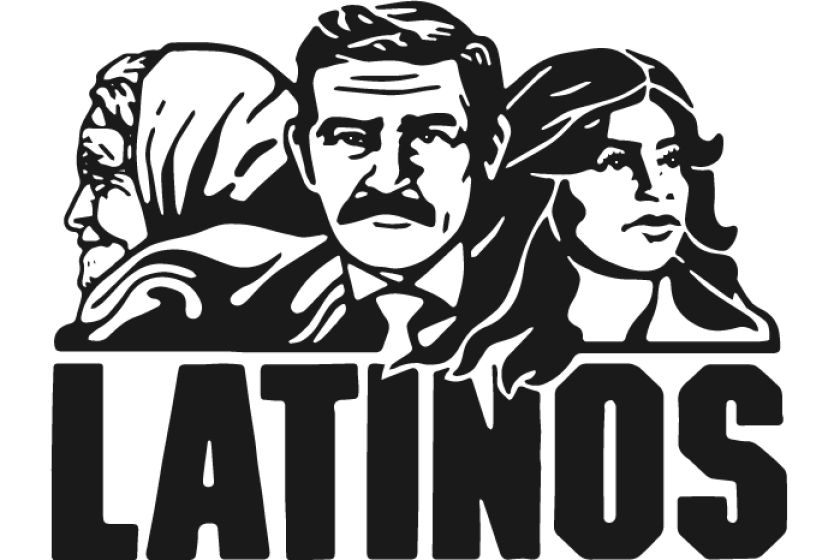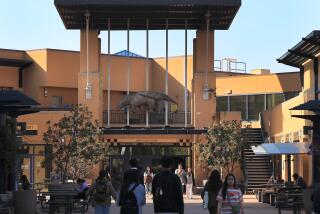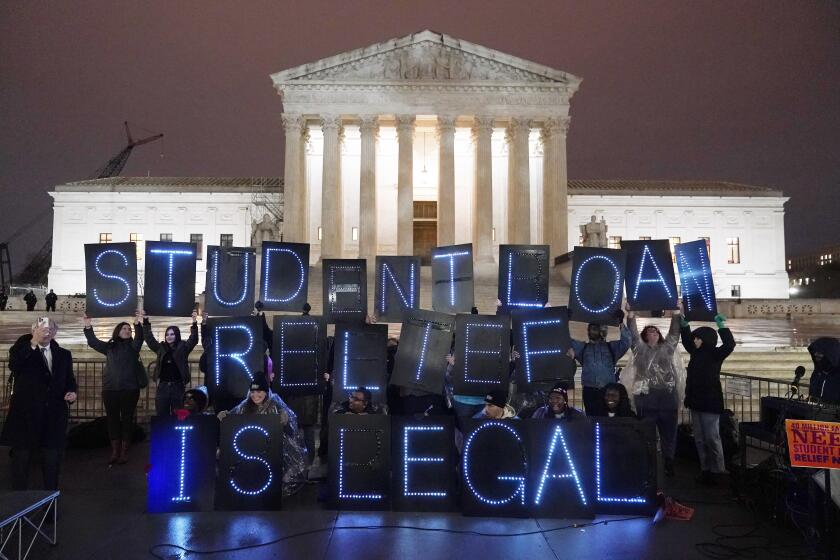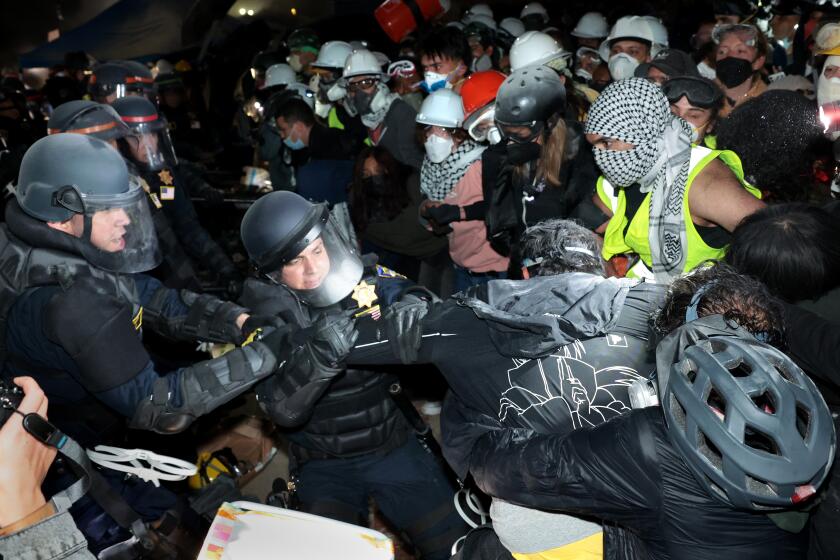University degrees elude most Latinos who set them as goal
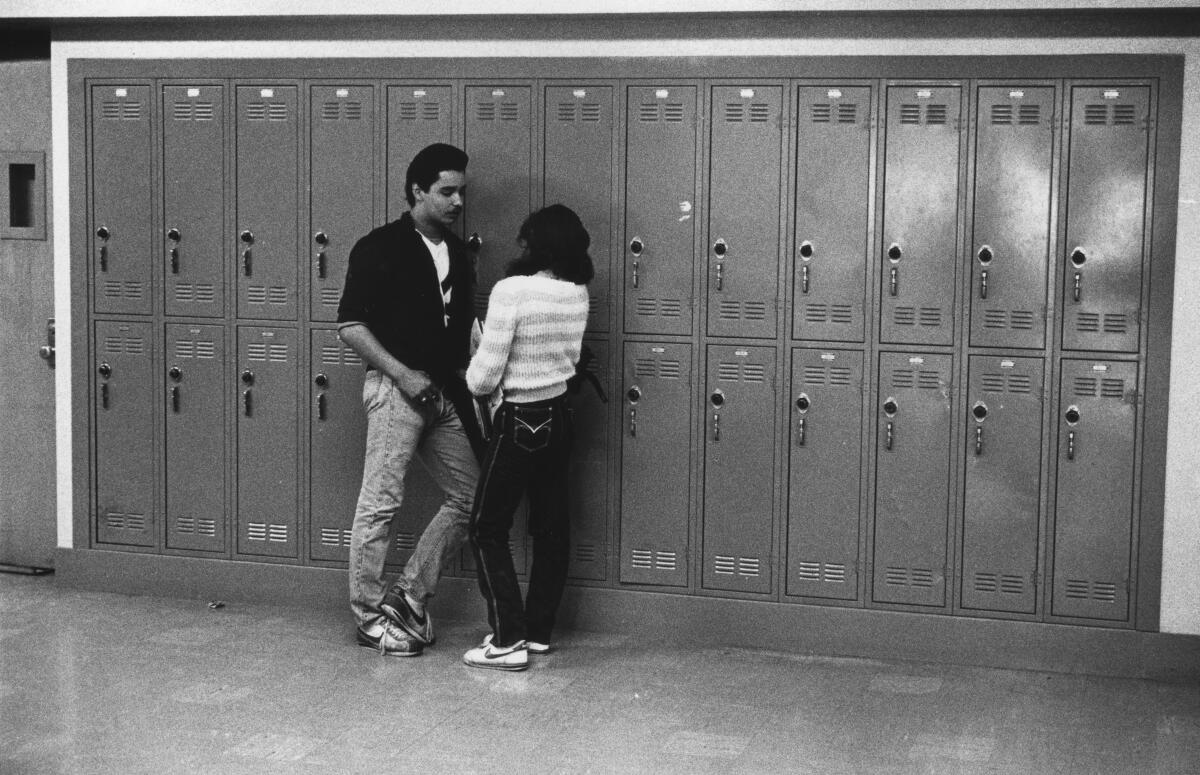
Imagine 100 hopeful youngsters setting off on a path that stretches from kindergarten to college. If they are Anglo students, 23 will be awarded bachelor’s degrees at road’s end. If they are Latino, only seven will.
These statistics, from a 1982 national study, dramatize the dismal record of Latinos in higher education.
Educators who have studied the problem see a variety of causes. Too many Latino youngsters leave public schools unprepared for college, or with little encouragement from teachers and others to attend college. Others stumble because of financial difficulties, language problems or lack of special counseling and other support services once they reach college.
Symptoms of the dilemma can be seen throughout higher education.
In California, about 80% of all Latinos attending college are enrolled in the two-year community college system. Many enter with hopes of transferring to four-year institutions once academic requirements are fulfilled, but few make it.
A comparison of Latino and Anglo enrollment shows that four times as many Anglos entered community colleges as first-time freshmen in 1981, but nine times as many Anglos transferred to the University of California system and eight times as many Anglos transferred to the state university system that year.
In the summer of 1983, The Times published a series on Southern California’s Latino community.
“The low transfer rate is a major public policy problem that needs to be addressed by both educational and political leaders in the state,” said Monte Perez, director of research and grants at California State University, Los Angeles. “Latino students hit the ceiling at the community college level.”
“There is a hemorrhage in the talent pipeline of my population,” fumed Cecilia Preciado Burciaga, assistant provost at Stanford University, who participated in the 1982 study by the Commission on the Higher Education of Minorities.
In the 19-campus state university system, more bachelor’s and master’s degrees were awarded in 1981 to students from other countries than to native Latinos. The same was true of master’s degrees and doctorates awarded in 1981 by the University of California.
“Here we are paying taxes to the public educational system, and foreign students seem to be obtaining more benefits from those taxes than Latinos who pay them,” Perez said.
National statistics on doctoral degrees reflect much the same pattern.
“In a given year, 83,000 doctorates are awarded annually throughout the United States,” Juan Lara, a UCLA dean, said. “Of that number, only 600 go to Chicano males. Of the 23,000 doctorates awarded to females, only 110 go to Chicanas and of these, generally none are in the areas of engineering, science, chemistry and physics.
“But if we are not participating right now in the explosion of technology and science,” Lara warned, “we will be the fodder of society in the future.”
Latinos who do make it to college find that perseverance helps.
Francine Diaz, 23, of Montebello was discouraged after three years of working full time and trying to finish what should have been a two-year community college program enabling her to transfer to UCLA.
She said counselors at East Los Angeles College gave her little encouragement or information on “how to get out of there.” In frustration, Diaz took the initiative and met with a counselor at UCLA.
The UCLA counselor, she said, “expressed some concern that it was taking me so long” and then mapped a course of action enabling her to transfer to UCLA in nine months and supplement her income with financial aid.
Diaz is now a UCLA junior, majoring in political science.
Barbara Moore, who heads counseling at East Los Angeles College, said she has a staff of only 14 to serve 17,000 students, and added: “If it were up to me—and it isn’t, I’m just a cog in a wheel—I would strengthen the transfer program.”
Meanwhile, Moore asked, “What do we do with those who can’t read or write when they come here?”
An admissions department officer at East Los Angeles College estimated that “half our students” are reading at fourth- and fifth-grade levels-”at most, ninth grade.”
This story appeared in print before the digital era and was later added to our digital archive.
More to Read
Sign up for Essential California
The most important California stories and recommendations in your inbox every morning.
You may occasionally receive promotional content from the Los Angeles Times.
